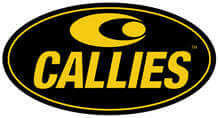
MS Access As A Dev Tool
Access continues to be a highly efficient tool for business database development.
The Best Microsoft Access Database Solutions owner, consultant, and principal programmer is Alison Balter - a recognized expert Microsoft Access consultant. Alison is the author of 15 Microsoft Access training books and videos. She is a frequent guest speaker at MS Access conferences and has developed hundreds of applications for businesses of all types.
We know your business data is important; we listen to your concerns, ask questions, and gather information from all stake holders. We discuss your needs and requirements for your database. We find out what you want, why you need various features so we can obtain as much information as possible. Once we have the information we need, we work with you to design the proper database architecture, plus the dashboards, the questions (queries), forms, and reports you need for an excellent database system.

We also create websites designed for speed to display your data accurately, using ASP.NET technology. Fast, secure, and robust, our ASP.NET web sites and web applications give you true business tool for finding and displaying information dynamically on the web.






Access continues to be a highly efficient tool for business database development.

How to create a Microsoft Access application with some unique tips and tricks.

Your Access developer near me has some great info for you about using Access efficiently.
Call MS Access Solutions at (323) 285-0939 For Complimentary Consultation
Queries: Stored Questions or Actions You Apply to Your Data Queries in Access are powerful and multifaceted. Select queries enable you to view, summarize, and perform calculations on the data in your tables. Action queries let you add to, update, and delete table data. To run a query, select Queries from the Navigation drop-down and then double-click the query you want to run, or right-click to select the query you want to run and then click Open. When you run a select query, a datasheet appears, containing all the fields specified in the query and all the records meeting the query's criteria.
When you run an action query, Access runs the specified action, such as making a new table or appending data to an existing table. In general, you can update the data in a query result because the result of a query is actually a dynamic set of records, called a dynaset, based on your tables' data.
When you store a query, only its definition, layout or formatting properties, and datasheet are actually stored in the database. Access offers an intuitive, user-friendly tool for you to design your queries. Figure 1.9 shows the Query Design window. To open this window, select Queries from the Navigation pane drop-down, choose the query you want to modify, and right-click and select Design. The query pictured in the figure selects data from Purchase Orders, Purchase Orders Status, and Purchase Price Totals tables and queries. (Note that you can base queries on tables and on other queries.) It displays the Creation Date, Supplier ID, Shipping Fee, Taxes, and several other fields from the Purchase Orders table, the Status from the Purchase Order Status table, and the Sub Total expression from the Purchase Price Totals query. Chapter 4, "What Every Developer Needs to Know About Query Basics," and Chapter 12, "Advanced Query Techniques," both cover queries. Because queries are the foundation for most forms and reports, I cover them throughout this book as they apply to other objects in the database.
Forms: A Means of Displaying, Modifying, and Adding Data Although you can enter and modify data in a table's Datasheet view, you can't control the user's actions very well; likewise, you can't do much to facilitate the data entry process. This is where forms come in. Access forms can take on many traits, and they're very flexible and powerful. To view any form, select Forms from the Navigation Pane. Then double-click the form you want to view, or right-click the form you want to view and click Open. Figure 1.10 illustrates a form in Form view. This form is actually four forms in one: one main form and three subforms. The main form displays information from the Orders table, and the subforms display information from the Order Details table and the Orders table. As the user moves from order to order, the form displays the orders details associated with that order. When the user clicks to select the Shipping Information and Payment Information tabs, she can see additional information about that order.
As with tables and queries, you can also view forms in Design view. To view the design of a form, right-click the Form from within the Navigation Pane and select Design. Figure 1.11 shows the Order Details form in Design view. Notice the three subforms within the main form.
This material originally appeared in Alison Balter's book Mastering Microsoft Office Access 2007 Development. Reprinted here by author's permission.
When you need a Microsoft Access programmer for your Anaheim CA business, call MS Access Solutions at (323) 285-0939. We have over 25 years experience in Microsoft Access programmer solutions. We create Access database applications for all sectors, consisting of hospitals, government agencies, the U.S. military, universities, agriculture, workers services, and insurance provider. We can take care of the most advanced as well as complicated Access and also SQL Server database programming for your business as well as smaller projects, like fixing damaged Access database forms, MS Access reports, Access macros, and VBA code.
More Access programmer cities we serve: Access Programmer Bakersfield CA

